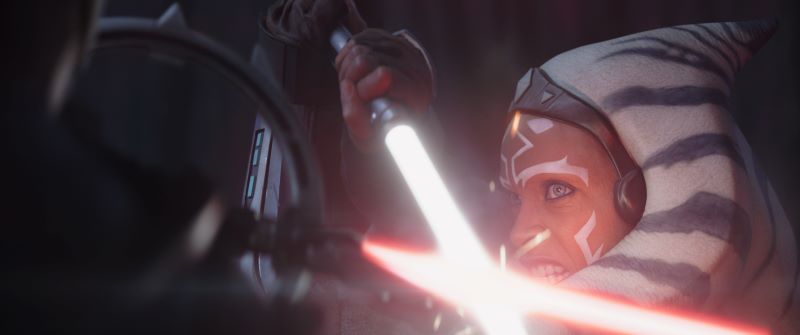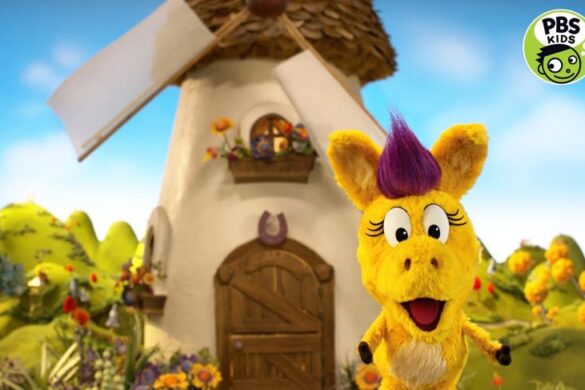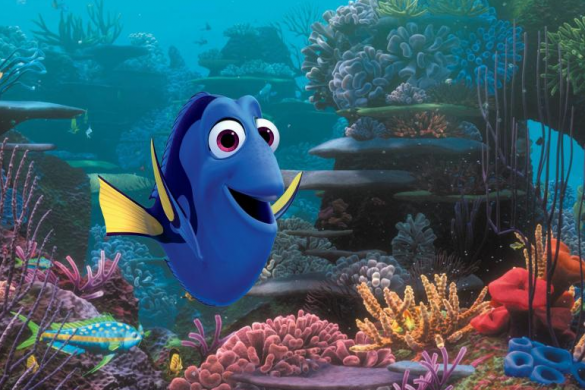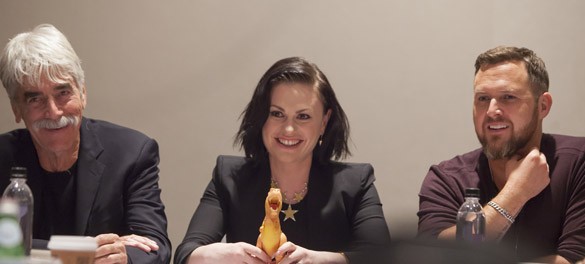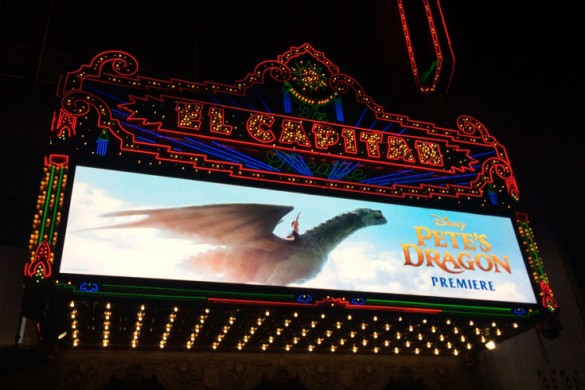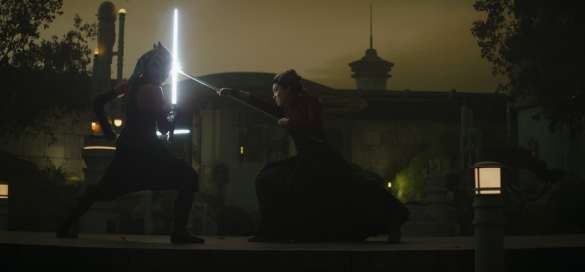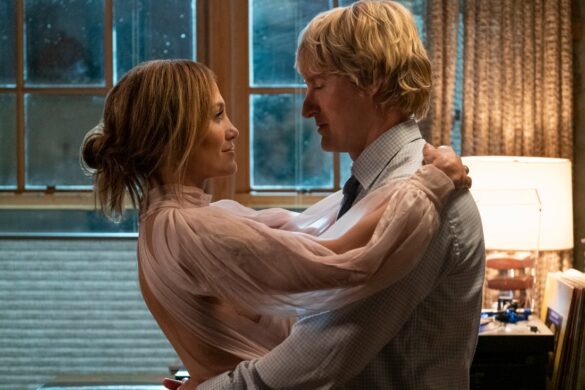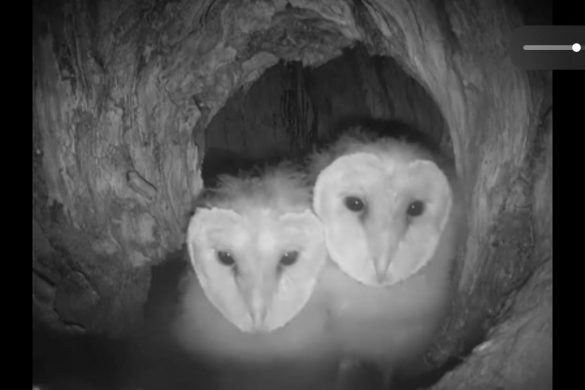Since Ahsoka debuted in the Clone Wars animated series, Dave Filoni has tried to include the fan-favorite character in as many Star Wars adventures as possible. From Rebels to The Mandalorian, the former Jedi has charted her own path as a Force wielder and away from the order that was quick to cast her aside. And now the lone wolf Jedi embarks on a new quest to find the clues that lead to finding the villainous Grand Admiral Thrawn (Lars Mikkelsen) and her missing friend and fellow Jedi Knight Ezra Bridger (Eman Esfandi).

Set after the events of “Return of the Jedi,” “Part One: Master and Apprentice” have ominous echoes of Star Wars features, a red-text scrolling exposition detailing the events post “Return of the Jedi.” Though the empire has fallen and the new republic has risen to take its place, there are sinister agents at work to undermine the fragile peace. As the exposition scrolls, Kevin Kiner’s cold score emphasizes the impending doom that’s to come to those we first meet as soon as we are done reading.
As soon as the last text disappears from the frame, the episode plays like the opening of “A New Hope” and the ending of “Rogue One A Star Wars Story,” where transport is taking Morgan Elsbeth (Diana Lee Inosanto) to trials for her high crimes as former Magistrate of Calodan. Soon, fallen Jedi Baylan Skoll (Ray Stevenson) and his apprentice Shin Hati(Ivanna Sakhno) enter the picture as a boarding party claiming to be Jedi. They overpower their hosts and annihilate the remaining New Republic security detail – a sequence with echoes of Darth Vader taking out a group of rebels in “Rogue One: A Star Wars Story” with ease. Together, they free Morgan from imprisonment and plan their next attack on Ahsoka Tano (Rosario Dawson).
At the ruins of a temple, Ahsoka is in search of an ancient star map that may lead her to the Ezra Bridger (Eman Esfandi) and Grand Admiral Thrawn’s (Lars Mikkelsen) whereabouts. The temple is one giant temple where Ahsoka must turn a trio of obelisks to uncover the hidden star map. The scene is diametrically opposed to the one we saw earlier, as Ahsoka is now faced against four assassin droids, two of which she easily defeats with a mix of lightsabers, Force wielding, and some ingenuity. While she immobilizes the other two, they resort to a self-destruct sequence. Its explosive power is massive as it wipes out anything in its path. Realizing that Huyang (David Tenant), a lightsaber-building droid, has no time to stop and pick her up, Ahsoka commands him to keep flying and lower the door so she can jump in. Of course, she can get in before being turned into ash. Now, she has to unlock the map. This won’t be easy, considering that she will need the help of her former apprentice Sabine Wren (Natasha Liu Bordizzo), a Mandalorian and graffiti artist and former member of the Ghost.
For the most part, the first two episodes play more like a continuation of Rebels than a true Ahsoka series. Considering Disney released Parts One and Two, the premiere episodes are mostly exposition to prep fans and viewers for what’s to come, help get reacquainted with some familiar faces, and remind us that this is his Star Wars story to tell. It’s what makes these episodes such a paradox. Fans of Rebels will love being reunited with their favorite characters. However, those who didn’t see the acclaimed animated series will be frustrated at the character dynamics, stunning reveals, and shocking plot twists. For example, the temple ruins are significant to those who may have watched Clone Wars or Rebels. Again, that will be exciting for some and vexing to others.
Still, Filoni utilizes the space he created for himself after shaping his corner of the Star Wars galaxy to give us a sense of the dynamics. He provides each scene enough room to breathe and stand independently, allowing us to connect with the characters organically. We have suddenly gained their trust and have an understanding of their relationships. And practical set pieces add more depth to The Volume, which expands upon each planet we visit.
“Part I: Master and Apprentice” sets the stage for the overall story that Ahsoka’s newest mission has a dual purpose. Rescue Ezra from where ever he is, and find Thrawn to prevent a war. And since it’s never a straight line with a Star Wars adventure, Ahsoka finds out that to unlock the Star Map she found; she must set aside any personal qualms she may have had with her previous padawan, Sabine. The relationship between the two is strained at best. They both gave each other a hard time and claimed one walked away from the other. It’s not clear what happened to cause this friction, but if they are to find Ezra and Thrwan, they must reconcile.
Dawson returns as the titular Jedi, who made their live-action debut in “The Mandalorian” season 2. It’s the first time the actor is headlining the series since she provided more supportive roles in “The Mandalorian” and “The Book of Boba Fett.” It’s also the first time a female character is leading the series. As such, the Jedi, who debuted as naïve, reckless, and ambitious, has evolved into something more potent since she witnessed the order stray from their ways and watched her friend and former master lose himself to the dark side.
As with most of the Star Wars shows, each premiere successfully launches to the excitement and joy of fans. The problem is that especially with a series like The Mandalorian, a majority of that is filled with unnecessary side quests that have nothing to do with the overall story. As such, it disrupts the pacing and takes its focus off the main objective. For its part, the two-episode premiere indicates that there won’t be any unnecessary filler to distract the Ahsoka and the crew of the Ghost. Instead, they get the reunion out of the way in the first episode. Hera is still a general of the new republic and often the voice of reason to two very stubborn and bullish friends. She helps the two recognize that they are both problematic towards each other and that they never made things easy.
Liu’s Sabine is still an anti-social and rebellious Mandalorian who wants nothing to do with politics or pageantry. A pursuit scene between herself and two other New Republic officers sent to apprehend her shows that she hasn’t lost her touch. If anything, she doesn’t even blink at the sight of a blockade. The actor’s performance instantly steals your heart as she is as sharp-witted as her lightsaber – which she modified when Ezra gave it to her. Of course, her being force sensitive presents a new twist to her character, as that was never confirmed in Rebels. So I suspect instead of side quests, the other episodes may try to fill in the narrative gaps left behind between the end of “Rebels” and the start of “Ahsoka.”
“Part Two: Toil and Trouble” moves relatively slowly compared to its predecessor. There are fewer action sequences in it, and that is substituted by exposition and a deliberately vague explanation of why Ahsoka and Sabine went their separate ways as Master and Padawan. Once again, Hera is a strong leader and also very material. There’s a hardness to her personality as a general, but when she is with her trusted allies, she is nurturing and kind. She sees how Ahsoka may be a little stubborn to bring Sabine back as a Padawan and encourages Sabine to trust herself even after failing to secure a vital MacGuffin. Then there’s Huyang offers some blunt but sage advice to Sabine about moving past the trauma she experienced by embracing it and learning from it.
The episode also considerably ups the stakes and gives our heroes a reason to move with the utmost urgency. It also provides a lot more for Hera to do than give advice to our heroes. As a general for the New Republic, we see her bureaucratic and aerial maneuverability. She knows how to find Imperial sympathizers in the age of the New Republic and dodge incoming fire while positioning the Phantom so that her trusty and cantankerous droid, Chopper, can throw a tracking device. It’s a fun sequence to watch, especially for Hera fans. And to see this in live-action is a sight to behold.
Ray Stevenson’s Baylon Skoll is a great addition to the Star Wars mythology. The fallen Jedi is ferocious in the way he incapacities and kills those who gets in his way. And yet one could see him as a patient father figure to his apprentice Shin (Sakhno), who is just as calculating as she is impatient. She moves swiftly and matches every lightsaber swing in a duel. You can sense that she wants to get the job done quickly but isn’t going to make herself open to any other attacks. There’s an elegant darkness to the way she duels.
Ahsoka plays more like a “Rebels” continuation than an actual Ahsoka series. Every aspect of it reminds us of what made the animated series tremendous and why it deserves the live-action treatment. And there’s enough ambiguity surrounding the new character dynamics – Ahoksa teaching Sabine to be a Jedi – to build a story so that the series is more than just the surviving members of the Ghost finding Ezra and preventing a war. So even though the show already has a built-in audience going into it knowing everything about the characters, Filoni pens a story that allows newcomers to come in and enjoy the show. If anything, “Ahsoka” gives fans a reason to rewatch Rebels and newcomers to watch it for the first time.

